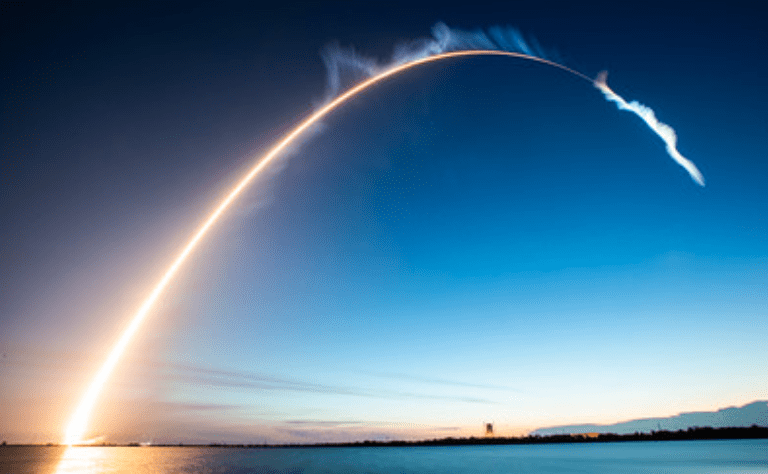Latest News

A ULA Atlas V rocket carrying the AEHF-5 mission for the U.S. Air Force Space and Missile Systems Center lifts off from Space Launch Complex-41 at 6:13 a.m. ET on Aug. 8, 2019. Photo: United Launch Alliance
The U.S. Space Force (USSF), which became an independent military service in December, 2019, is requesting $11.3 billion for research and development in the service’s fiscal 2022 budget — an $800 million increase from the fiscal 2021 enacted amount — and about $2.8 billion in procurement, a $456 million increase over fiscal 2021.
The USSF asks for more than $2.4 billion in R&D for the Lockheed Martin Next-Generation Overhead Persistent Infrared (Next-Gen OPIR) missile warning system, $132 million more than the fiscal 2021 funded amount.
In January, Lockheed Martin received a contract modification worth up to $4.9 billion on the company’s existing contract for Next-Gen OPIR for work associated with the manufacturing, assembly, integration, test, and delivery of the first three Next-Gen OPIR satellites and delivery of ground mission unique software and ground sensor processing software. The Jan. 4 Air Force award to Lockheed Martin was the expected, “Phase 2” follow-on contract to the 2018 award to the company for the development of the three satellites.
In August, 2018, the Air Force said that the Next-Gen OPIR award to Lockheed Martin was sole-source because “only Lockheed Martin Space has the ability to meet” the first satellite’s launch date of fiscal year 2025 and award to any other company “would result in an unacceptable schedule delay in fulfilling the Air Force’s urgent fielding requirements and substantial duplication of cost to the government that is not expected to be recovered through competition.”
The USSF, in its fiscal 2022 budget request, said that it is using Middle Tier Acquisition authorities “to rapidly prototype solutions.”
“This expedited pathfinder approach delivers the first resilient Geosynchronous satellite and associated ground system in FY 2025 and the first polar satellite in FY 2028,” USSF said.
Bolstering Space Domain Awareness (SDA) to deter potential adversaries and avoid space collisions is also a prime concern for USSF research and development. Future U.S. military SDA sensors include the National Reconnaissance Office’s (NRO) Silentbarker and and USSF’s Deep Space Advanced Radar Capability (DARC). The USSF’s fiscal 2022 budget request funds DARC at $123 million–a $90 million increase over fiscal 2021.
Johns Hopkins Applied Physics Laboratory has been working on DARC, and a subsequent contract may come this summer. Pentagon budget plans had called for more than $141 million for DARC in fiscal 2022 and more than $200 million through 2025. A ground based sensor, DARC is to provide better tracking of foreign and domestic deep space objects in Geostationary Orbit (GEO).
In USSF’s fiscal 2022 budget request the service also requested $243 million in R&D for Protected Tactical Satcom (PTS) — a $43 million increase over fiscal 2021 for “increased resilience and capacity,” USSF said. In February and March last year, USSF’s Space and Missile Systems Center (SMC) awarded prototype contracts for PTS to Lockheed Martin, Boeing, and Northrop Grumman.
The R&D program increases outlined in the USSF budget materials on May 28 add up to $434 million — a figure that leaves open the question of where the USSF fiscal 2022 budget blueprint devotes the remaining $366 million of its requested $800 million R&D increase.
One distinct possibility for the remaining, proposed USSF R&D increase is the Space-Based Ground Moving Target Indicator (Space-Based GMTI) radar effort to replace the aging Air Force Joint STARS aircraft by Northrop Grumman.
USSF Chief of Space Operations Gen. John “Jay” Raymond divulged the Space-Based GMTI effort this month and said that USSF would use “the full spectrum of options and try to leverage commercial more than we’ve done in the past..and drive competition.”
Much of the $456 million USSF requested increase for procurement in fiscal 2022 lies with National Security Space Launch (NSSL) — the successor to the Evolved Expendable Launch Vehicle program. USSF requests more than $1.3 billion in procurement for five NSSL vehicles, an increase of two vehicles and $341 million from fiscal 2021.
Last Aug. 7, under Phase 2 of NSSL, USSF’s SMC, in partnership with the NRO, awarded United Launch Alliance (ULA) a $337 million for two classified launches in 2022 — USSF-51 and USSF-106, and SpaceX a $316 million contract for one classified mission launch — USSF-67. Delays recently surfaced in planned USSF missions under NSSL.
The first USSF launch with SpaceX’s Falcon Heavy rocket for the classified USSF-44 mission, carrying a TETRA-1 prototype Geostationary Orbit (GEO) satellite and a larger satellite, has slipped from July to October, and the first USSF launch of the ULA Vulcan Centaur has slipped from the second quarter of next year to 2023.
This piece was first published by Via Satellite’s sister publication Defense Daily
Get the latest Via Satellite news!
Subscribe Now